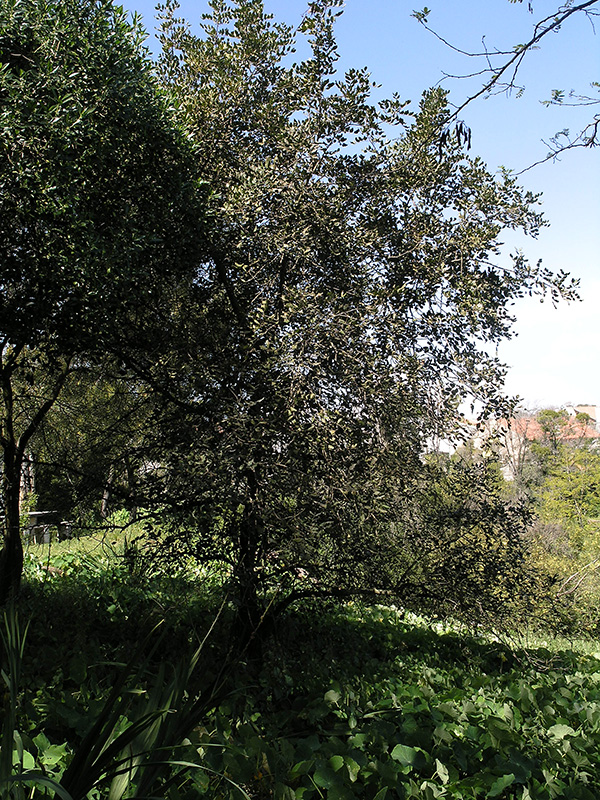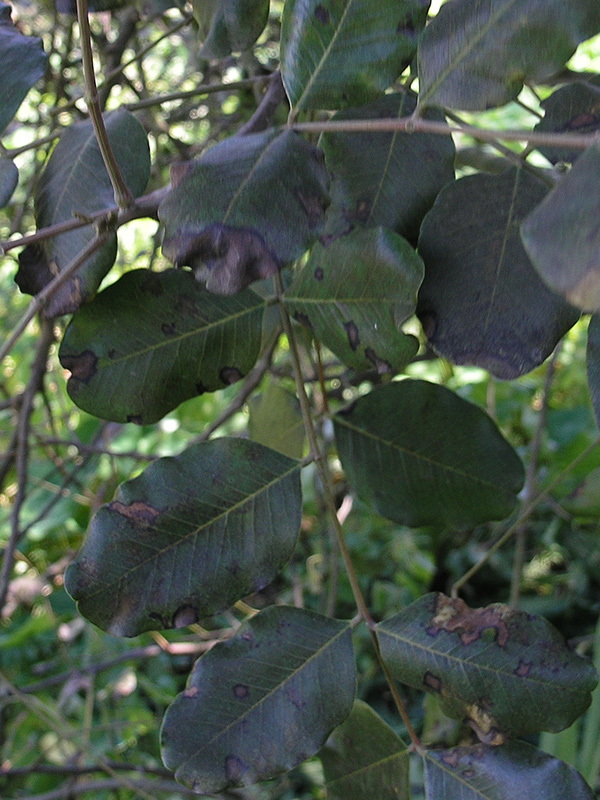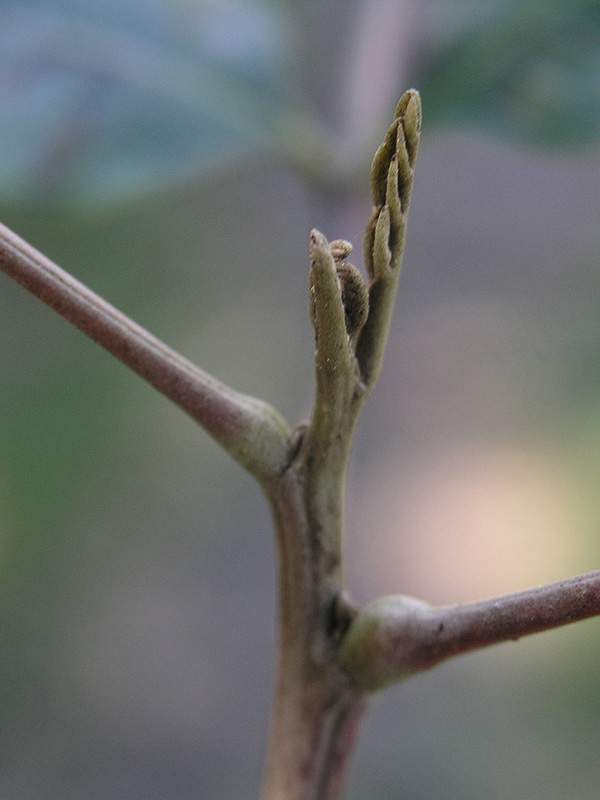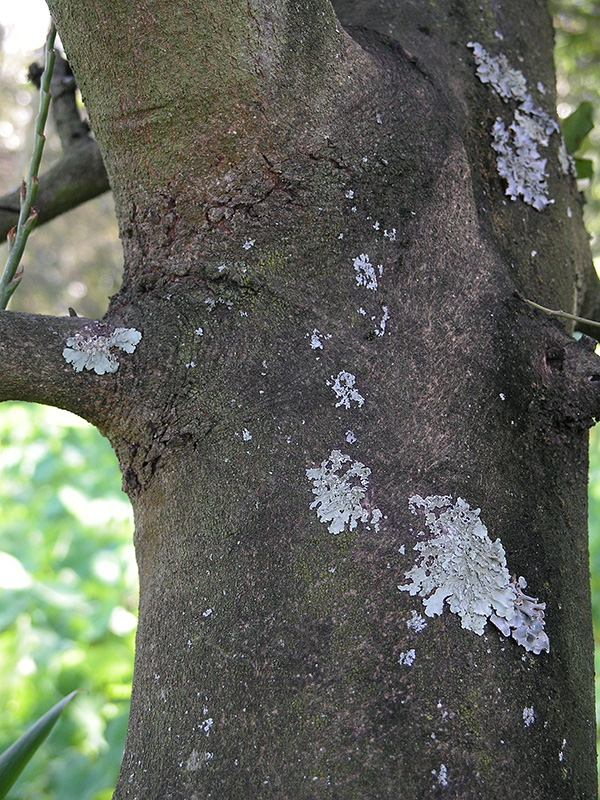| General Description | An umbrella shaped evergreen that produces long brown pods. This plant has dark brown scaly bark, pink or red rachis with deep green leaflets. It's the only Mediterranean tree to have its main flowering season in autumn with bright red flowering racemes that grow directly on the trunk or branch as a cauliflory. |
| ID Characteristic | Long leathery pods. Young bark is deep red and turns dark brown as it matures. Identifying the species in autumn is easiest as it is one of the only Mediterranean tree to bloom in autumn. Its flowers are bright red and grow like a catkin directly on the branches or trunk. |
| Shape | Broad, rounded or umbrella shaped crown with an irregular growing trunk, twisting and developing deep ridges as it ages. |
| Landscape | Often used in xeric landscapes as a dense shade tree. Its drought and pollution tolerance combined with its low maintenance needs makes the Carob tree a commonly used tree along streets in warmer regions such as Australia and California. Some reforestation projects use this tree due to its ability to grow in poor soil. |
| Propagation | Sowing, budding or grafting. Grafted trees tend to be hosted by olive species. Budding can occur once the tree stem is at least 1 cm thick. Fresh seeds can be sown right into the field while dry seeds need to be scarified using diluted hydrochloric or sulphuric acid. Seeds can also be soaked in water to be prepared for planting, then plant in sand and keep moist for about six weeks. Remove the seeds when they are approximately 3x their original size and plant in flats to germinate. When a second set of leaves form transplant into small pots until they reach 30 cm tall, then transplant to nursery rows or larger containers. |
| Cultivation | Prefers moist to dry poor soil with moderate alkalinity and good drainage. Cool winters, mild springs and warm to hot summers with little to no rain. Tolerance of pollution and drought is high however, frost can damage young plants. |
| Pests | Prone to some fungal diseases, insects and mammalian pests. The Carob moth (Myelois ceratonia) larvae bore inside flowers and new pods while the larvae of the Gall midge (Asphondylia gennadii) cause stunting. Cerambyx velutinus, Aspidiotus ceratoniae, Lecanium sp., Lepidosaphes sp., and Aonidiella aurantii are other species of insects that cause damage.
Rats, pocket gophers, rabbits, deer and ground squirrels may be problematic. |
| Notable Specimens | A Ceratonia siliqua in Pasadena is registered as a California Big Tree, a program that records and monitors the largest tree specimens.
|
| Habitat | Mild and dry locations. |
| Bark/Stem Description | Mature bark is a scaly and dark brown in colour while the young trunk bark is smooth and pale brown. |
| Flower/Leaf Bud Description | Smooth and ovoid, changing in colour depending on the age of the branch from red to pale yellow. |
| Leaf Description | Pinnately compound with 6-10 glossy green leaflets and can grow with or without a terminal leaflet. Approximately 10-20 cm in length and grow in an alternate arrangement. Firm succulent leaves have a rich, dark green face with a pale green underside. Leaves are shed biannually in late summer. |
| Flower Description | Red with tints of green and grow as a cauliflory spirally on catkin-like racemes with pentamerous symmetry to the calyx. Nectaries are found on the disc-like calyx. Male flowers have an unpleasant odour with 5 stamens, hairy sepals, a nectarial disc and a basic pistil. Females, (6-8.5 mm) consist of a basic stamen, 5 sepals and a pistil on a disc. Hermaphrodite flowers consist of a pistil and 5 stamens. |
| Fruit Description | Elongated brown pods that are about 10-30 cm long, 1-3.5 cm wide and 1 cm thick. These edible pods are what make the tree so versatile. The long pods tend to be compressed, curved or straight and thickened at the sutures with a blunt or subacute apex. The fruit start as bean-like structures, ripening during the late summer or autumn with a wrinkled, leathery skin. These compressed, oblong seeds are very hard with a smooth glossy brown testa and are high in protein as well as vitamin D, B1, A and E. |
| Colour Description | Bark starts deep red, turning pale brown then dark brown with maturity. The flowers are greenish-red with bright yellow stigma and anther. The leaves are glossy dark green with pale green underside. Ripe fruit pods are rich, dark brown with glossy brown seeds. |
| Texture Description | Young bark is smooth, becoming scaly, ridged and cracked as the tree ages. Leaflets are leathery and hard with smooth, pink, waxy-like rachis. Ripe pods are leathery with rough sutures, the inner seeds are glossy and soft. |



